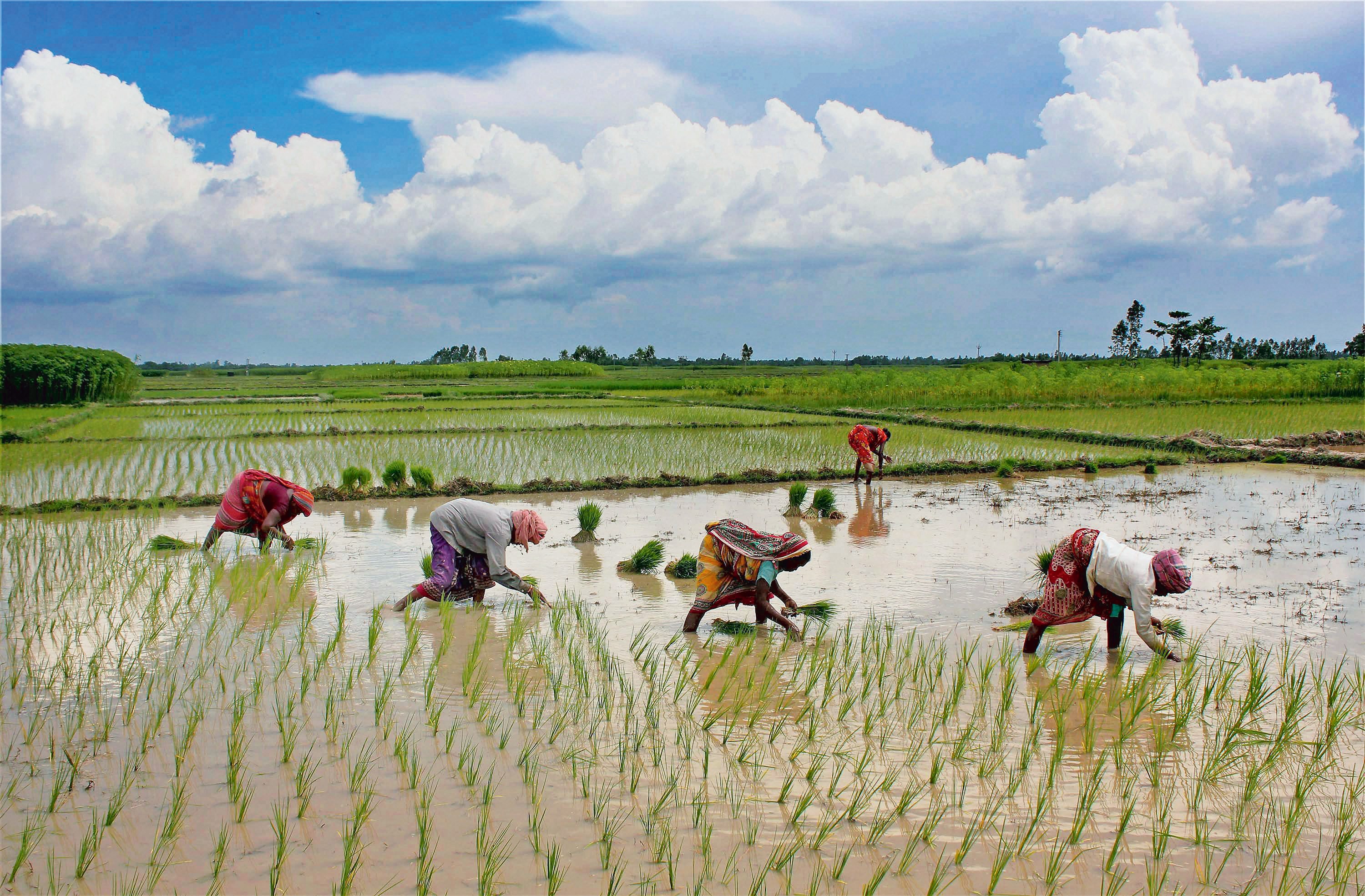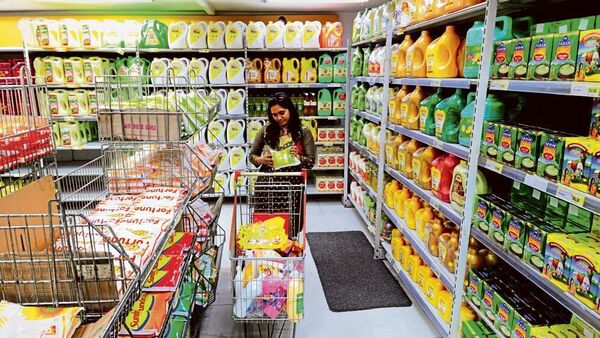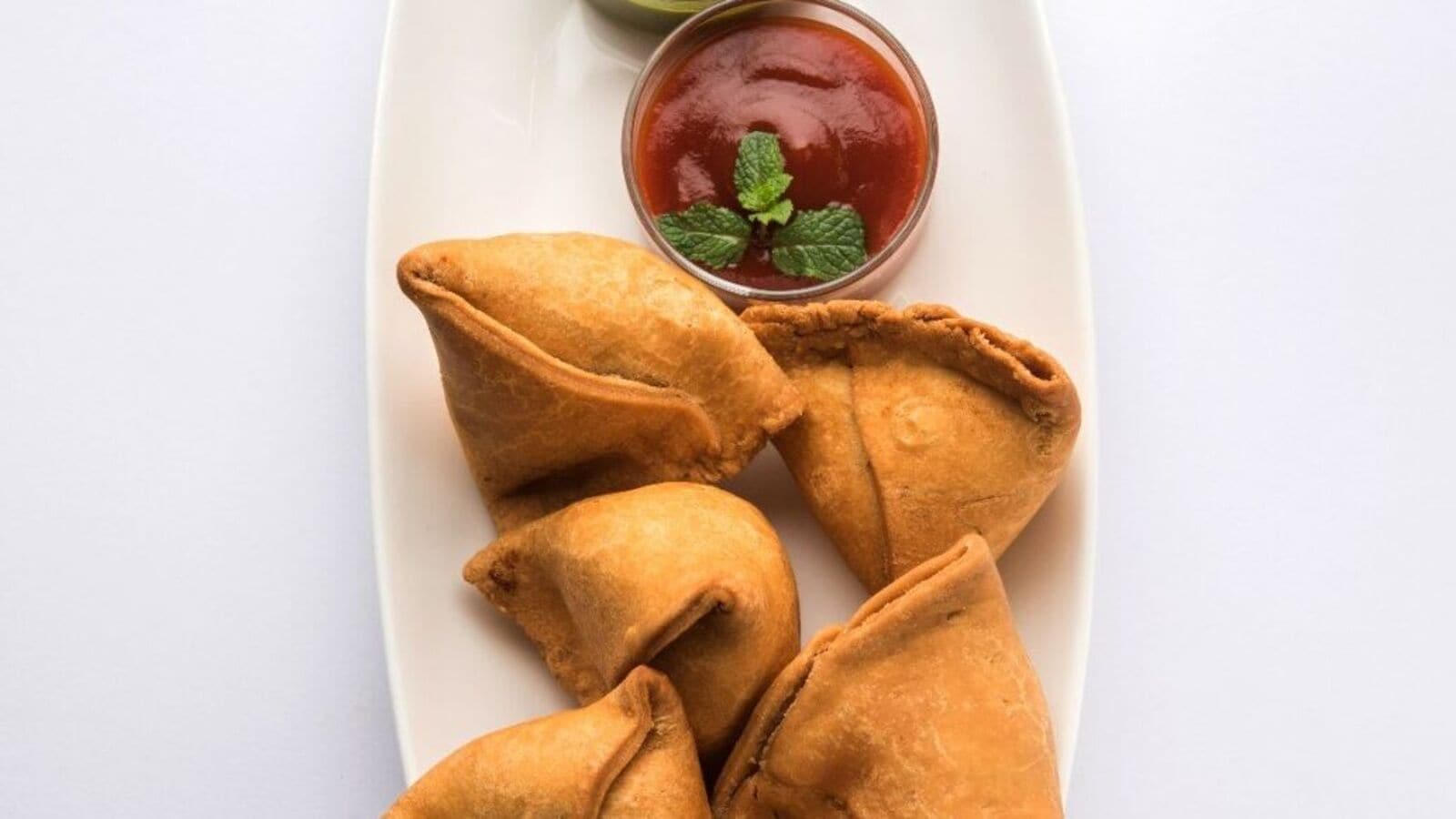Government procurement at the minimum support price (MSP) was another boon for Raghuvanshi because market prices were about 20% lower than the MSP. Though he could sell just about two-thirds of his total production to government agencies, without this support Raghuvanshi’s losses would be significant.
The good tidings for Raghuvanshi, however, are not enough a cure for India’s chronic deficiency in cooking oils. Production of summer-grown (Kharif) oilseeds like soybean and groundnut in 2024-25 was higher than the five-year average. The government also raised import duties in September by 22% to support domestic farmers and push them to plant more oilseeds. Planting during the winter (Rabi) crop season was higher than the five-year average, yet lower than the previous year, on account of a drop in mustard acreage.
Meanwhile, consumer prices are shooting up. Retail inflation in edible oils rose sharply, from 2.5% (year-on-year) in September last year to 14.6% in December. This is because of a spike in the price of imported oils, particularly palm oil imported from south-east Asia.
Currently, India imports about 65% of its annual requirement of cooking oils; over half of it is palm oil from Malaysia and Indonesia. Once considered to be the cheapest, palm oil is now as expensive as soy and sunflower oil.
The current situation is a double whammy for the government’s inflation managers. On one side, farmers are not receiving remunerative prices as market prices of most home-grown oils like soybean and groundnut are lower than support prices. On the other side, consumers are shelling out more due to a spike in international prices.
For farmers, profitability is lower in oilseeds due to low productivity. This is also why they are unable to compete with global producers. The heavy dependence on imports means consumers are vulnerable to price shocks from time to time. For instance, following the outbreak of the covid-19 pandemic, international edible oil prices shot up by a staggering 66% in 2021 (year-on-year) and increased by another 14% the following year after Russia’s invasion of Ukraine.
More recently, as Indonesia revealed plans to divert more palm oil to make bio-diesel, international prices have again turned dearer. As on 28 January, wholesale palm oil prices in India are up 42% year-on-year. If your neighbourhood sweet shop raises the price of deep-fried samosas, you know who to blame. Rising palm oil prices are also likely to hurt the bottom line of packaged food and soap makers.
Outcompeted
“In my village and neighbouring areas, farmers are shifting from soybean to paddy and corn,” Raghuvanshi, the farmer from Madhya Pradesh, told Mint. This is because corn and paddy yields are between 50-60 quintals per hectare (compared to 12-14 quintals for soybean). Farmers have lost interest in oilseeds also because of low prices due to cheaper imports, Raghuvanshi added.

View Full Image
The average Indian farmer is unable to compete with international growers because of their superior yields—between two to three times per unit of land—compared to oil yields in India. The government did take corrective steps by raising import duties and pushing an oil palm mission but these will take time to bear results, say experts.
International palm oil supplies are likely to remain tight in the coming months on account of Indonesia’s biofuel mandate (it is the world’s largest producer of palm oil), said B.V. Mehta, executive director at the Solvent Extractor’s Association (SEA), the industry body representing the vegetable oils sector in India.
“The share of home-grown palm oil is tiny (just 4% of the annual palm oil consumption; the rest is imported). Domestic production of other oilseeds is not enough to meet growing demand. This means there is no visibility in achieving self-sufficiency in edible oils,” Mehta said.
Mehta added that the only remedy is to offer farmers a profitable price (via MSP-based purchases) and allow genetically modified (GM) technology for soybeans and mustard to improve yields. “For too long, consumers have been pampered with cheap imports. This has hurt farmers—in the ongoing Rabi season, farmers have moved some area away from mustard to wheat. Even domestic oil processors are operating at 35% capacity due to the influx of imports and refined oils.”
In the past five years (between oil years 2019-20 and 2023-24), edible oil import volumes went up by 21% while the import bill shot up from ₹72,000 crore to a staggering ₹1.32 trillion. An oil year runs from November of one year to October of the next.
Elusive self-sufficiency
To be sure, oilseed acreage and production did improve over the past decade and a half, but fell short of growing demand. Data from the agriculture ministry shows that since 2010, the area under oilseeds went up by 11% (till 2024), which resulted in a 22% increase in production. But this was not sufficient to meet consumption demand. As a result, imports nearly doubled, from 8.4 million tonnes in 2010-11 to 16 million tonnes in 2023-24.
In view of the growing shortage, the centre announced a National Mission on Edible Oils last October. The scheme, which aims to halve import dependency (to less than 30% of the annual requirement, from over 60% currently) will be implemented between FY25 and FY31 with financial support of ₹10,103 crore.
But Mehta from SEA estimates that even with growing production and a focus on palm oil, India may end up importing 12-13 million tonnes of edible oils in 2030, about 40% of the projected annual demand. This is because every year, the demand for cooking oils increases by roughly a million tonnes; currently India’s annual consumption hovers between 25-26 million tonnes.
The centre announced a National Mission on Edible Oils last October. The scheme, which aims to halve import dependency, will be implemented between FY25 and FY31 with financial support of ₹10,103 crore.
We should take a lesson from history, Mehta added. During an earlier technology mission on oilseeds, within just six years (beginning 1986), India achieved a remarkable 78% spike in domestic production and a brief window of self-sufficiency by 1992. The policy followed was simple but effective: farmers were supported with profitable prices while imports were restricted.
A liberal trade policy, opening the edible oil sector to cheap imports, stalled this progress, noted a 2024 status paper by government think tank Niti Aayog. From samosas and packaged savouries to soaps and cosmetics, cheap imported palm oil became ubiquitous in the daily lives of Indians. Meanwhile, domestic farmers were outcompeted.
A second major reason behind the surge in imports is the stagnant productivity of oilseeds grown in India compared to leading exporting countries, which use transgenic (genetically modified or GM) hybrids. Comparing the yield gaps in different oilseeds between the highest productivity levels in India and the global best, the Niti paper showed that farmers in Brazil harvest 154% more soybeans per unit of land than Indian growers. In sunflower and groundnut, the yield gap is between 75-77%.
Interestingly, even though India allows the import of transgenic high-yielding soy oils from Latin American farms in Brazil and Argentina, domestic farmers have not been allowed access to this technology.
In 2022, India’s biotech regulator approved a transgenic mustard variety (DMH-11) developed by Delhi University. But the Supreme Court delivered a split verdict on the approval last year, asking the government to formulate a national policy on GM crops instead. Till date, Bt cotton is the only GM crop allowed for commercial cultivation. But in cotton, too, the technology is now over 18 years old, and that has resulted in stagnant yields.
“DMH-11 mustard would have opened the door to new technologies. Instead of spending money to support oil palm, the government should announce a mega-project to develop hybrids for mustard and sunflower crops. In self-pollinated crops like soy (where the seed can be reused by farmers), seed companies will bring new technologies only if patent rights are enforced,” said Bhagirath Choudhary, founder-director at the South Asia Biotechnology Centre, Jodhpur.
A long shot?
The influx of cheap imports beginning 1994 was followed by a tragedy in 1998, when 60 people died in Delhi after consuming mustard oil adulterated with argemone seed oil (a toxic weed). This led to a clampdown on traditional cold-pressed oil mills, known as ghanis. Edible oils were also mandated to be sold only in sealed packs. Eventually, this led to a permanent shift in preference, with consumers switching to colourless and odourless refined oils.
Solvent-extracted refined oils are produced under high heat using chemicals, leading to a loss of nutrients. They also lack the odour, pungency, and nutritive qualities of traditional cold-pressed oils. Consumers can still buy cold-pressed oils, but those sell at more than double the price of refined oils.

View Full Image
Following the massive spike in the edible oil import bill during the covid outbreak, the government initiated a national mission to promote oil palm plantations (in August 2021, with a financial outlay of ₹11,000 crore). The target was to boost production of home-grown palm oil to 1.12 million tonnes by 2025-26. Under the scheme, farmers are provided financial assistance to raise plantations plus viability gap funding to protect them from international price fluctuations.
However, as per industry insiders, overall production is currently less than half a million tonnes (the area under cultivation is estimated to be less than 400,000 hectares). This means, the production target for FY26 is likely to be missed. Current production also fades in comparison with annual palm oil imports, which range between 8-9 million tonnes.
Palm has several advantages: the plantations are not vulnerable to pests and diseases, and yields can go up to 4 tonnes per hectare compared to the current productivity of 1.3 tonnes per hectare for oilseeds (average productivity of nine oilseeds in FY24).
The trouble is oil palm is a long-gestation crop that takes about four years to start producing fresh fruit bunches, which are crushed for oil. Peak productivity comes when plantations are 8-9 years old and continue for up to 25 years. This long gestation period means India has to wait for several years for any meaningful import substitution to take effect.
Oil palm is a long-gestation crop that takes about four years to start producing fresh fruit bunches, which are crushed for oil. Peak productivity comes when plantations are 8-9 years old.
Meanwhile, domestic firms—the likes of Godrej Agrovet and Patanjali Foods—are aggressively expanding and promoting plantations in multiple states beyond present hubs such as Andhra Pradesh and Telangana.
Farmers getting into palm are very positive and India can expect to produce 3 million tonnes of palm oil by 2032, said Sougata Niyogi, CEO of the oil-palm business at Godrej Agrovet Ltd. The company is currently the country’s largest producer, with 75,000 hectares under cultivation in 12 states, including Assam and Tripura in the northeast.
“Oil palm is a sturdy crop with severe water shortage being the only risk factor. Our current yield in Andhra Pradesh (the largest growing state) is already higher than that of Malaysia. Within the next 5-7 years, homegrown palm can replace 20% of palm oil imports,” Niyogi added.
If that indeed happens and coincides with higher production of native oilseeds such as mustard and groundnut, government inflation managers can breathe a sigh of relief.
But for now, all bets are off.
cooking oil,edible oils,edible oil import,MSP,minimum support price,oilseeds,Kharif crop,Rabi crop,sunflower oil,palm oil,Solvent Extractor’s Association,vegetable oils,farmers,Niti Aayog,GM crops,cold-pressed oils,Godrej Agrovet,inflation,oil price,Make in India
#Oils #Indias #cooking #woes





